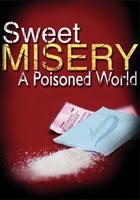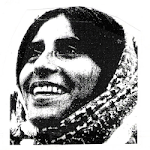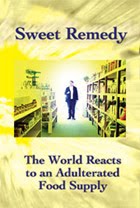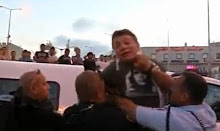 BBC
BBCWorld: Middle East
VX gas destroyed in Iraq
(July 28th, 1999) A United Nations team of independent experts has left Baghdad after destroying samples of deadly VX nerve gas.
After several days of wrangling, the UN Security Council agreed to the destruction of the VX gas left behind by UN weapons inspectors (Unscom) when they withdrew from Baghdad last year.
The UN secretary-general's envoy to Iraq, Prakash Shah, said: "The team completed its task late last evening and left this morning for Amman on its way to The Hague.
"The remaining task of destroying seven vials of VX standards was completed yesterday after instructions were received to that effect from (the UN Security Council in) New York," he said.
The presence of the samples in a UN laboratory had sparked a controversy, with Iraq and Russia suggesting that Unscom inspectors might have used the nerve gas to contaminate Iraqi warheads in order to justify American and British air strikes last December. ![[ image: Mr Shah said the nerve agent had been sealed off in the laboratory]](http://news.bbc.co.uk/olmedia/405000/images/_406321_shah150.jpg)
Mr Shah said the nerve agent had been sealed off in the laboratory
Unscom denied the contamination charge, saying the diluted VX was used exclusively to test against Iraqi chemicals.
The Security Council finally ordered the destruction of the vials after Russia dropped its demand for an analysis of the gas found in the Unscom laboratory.
Reports said the US and Britain had opposed the Russian demand, considering it an effort to discredit Unscom.
The disarmament experts had delayed their departure from Iraq for a few days until the Security Council gave them the go-ahead to destroy the nerve gas.
Mr Shah said the waste of the destroyed agents had been "put into concrete and left in the laboratory which has been sealed off".
'Erasing evidence'
Iraq's Vice-President Taha Yassin Ramadan said on Wednesday that he was sure the VX was brought to Iraq to contaminate Iraqi warheads and make it look as though Iraq possessed prohibited weapons.
"America's blackmail, robbery and accusations (against Iraq) in order to prolong the unjust embargo on Iraq are well known," he said. ![[ image: VX can cause death by suffocation]](http://news.bbc.co.uk/olmedia/405000/images/_406321_mask150.jpg)
VX can cause death by suffocation
The official Iraqi News Agency said that the VX was destroyed under US pressure "to erase evidence" that UN inspectors were "involved in contaminating a number of scrapped (Iraqi) missile warheads."
The team of independent experts last week discovered seven vials of diluted samples of VX, three of them opened. Each vial contained less than 0.1 milligrams of concentrated VX.
The team, recruited for the UN by the Organisation for the Prohibition of Chemical Weapons in The Hague, found other toxic materials including mustard gas. These were destroyed and packed in concrete and sand to render them harmless last week.
Lethal agent
VX is a nerve agent involving organic phosphorous compounds and sulphur. It works essentially by penetrating the skin and disrupting the transmission of nerve impulses.
At a high concentration, symptoms progress through coughing, increased perspiration, vomiting and death by suffocation.
The agent attacks both the muscles around the lungs and the respiratory part of the central nervous system. In liquid form, a drop the size of a pinhead is lethal.
When the UN's weapons inspection and destruction process began in Iraq after the Gulf War, the Iraqis initially denied that they had been working on VX.
Subsequently, they admitted to having carried out research, and finally conceded that nearly four tonnes of the agent had been produced.
But Baghdad has consistently denied having deployed VX in missile warheads - what the Americans call "weaponisation".





























No comments:
Post a Comment